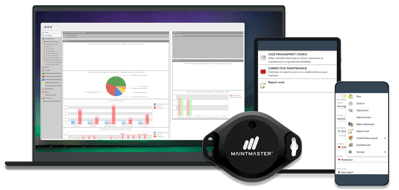Evaluating a Maintenance Management System might be a tough job. Features are hard to compare. Pricing and total cost of ownership are tricky to calculate. And how do you know what you need? We think these five steps will help!
1. Maintenance knowledge
A Maintenance Management System is not like most business systems. It’s one of the few built to be used as little as possible! Your technicians should be out there improving the performance of the equipment, not pounding work orders or navigating screens to find the right function.
This requires deep knowledge of maintenance and the challenges all maintenance departments face. Since you also know maintenance, you will probably recognize a peer.
2. Flexibility
You can’t test all situations and coming changes to your organization in advance. You should opt for a system that is flexible enough to meet your imaginable needs. Consider your routines and workflows. Can the system support all steps, every phase of those workflows? And your performance indicator, can you tweak them? Break them down, follow up over time and create new ones?
Once you realize flexibility is of great importance you should ask; Will every change require consultants or can you do the configuration in-house? Many system vendors get most of their income from the consultants programming your system. Because of the cost, configurations tend to decrease over time leaving a system that no more supports your business. If you on the other hand can do all configuration in-house you can fine-tune the support for every aspect of your business.
3. User-friendliness
A concept that’s hard to evaluate! Every software vendor will state that their software is the most friendly ever created. You need a serious test drive. Think of all aspects of user-friendliness: Your technicians want tasks done quickly. They need to find things fast. At the same time, you want every input to be of very high quality. You want your operators to intuitively understand how to make a fault report, the boss to easily drill down into the statistics, and external technicians to report all their jobs.
Put together a team to test-drive all systems you are evaluating. Prepare some tasks you know will be common. First, see how much information they need to understand what to do. Then, after a couple of times, clock them to see how much time they spend doing these common tasks.
An additional aspect of user-friendliness is the same as the first point; flexibility. Is it easy to configure the system by yourself?
4. Roadmap
Investing in a CMMS might be a low cost, but the real investment you do over time is all the knowledge your users have. Where are the vendors going with their system? Do they have a direction, are they pushing technology, Industry 4.0, Internet of Things, are they cloud-based, have open web APIs? It’s better to join someone with a clear vision who can tell you about it. It might be your future too!
5. Functionality
Why is functionality last? In my experience, you will benefit from keeping an open mind when it comes to functionality. If you made sure your supplier knows maintenance, you can also expect the system to have the functionality required to support a maintenance organization. But the way the system supports common tasks may differ. So instead of asking for specific functions, I recommend you ask how things are solved. “Things” are fault reporting, prioritizing, planning, preparing planned maintenance, adding equipment, purchasing, indicators, trend charts, or whatever you feel is important. Maybe you will find a simpler way to do things, some vendors are quite innovative.







